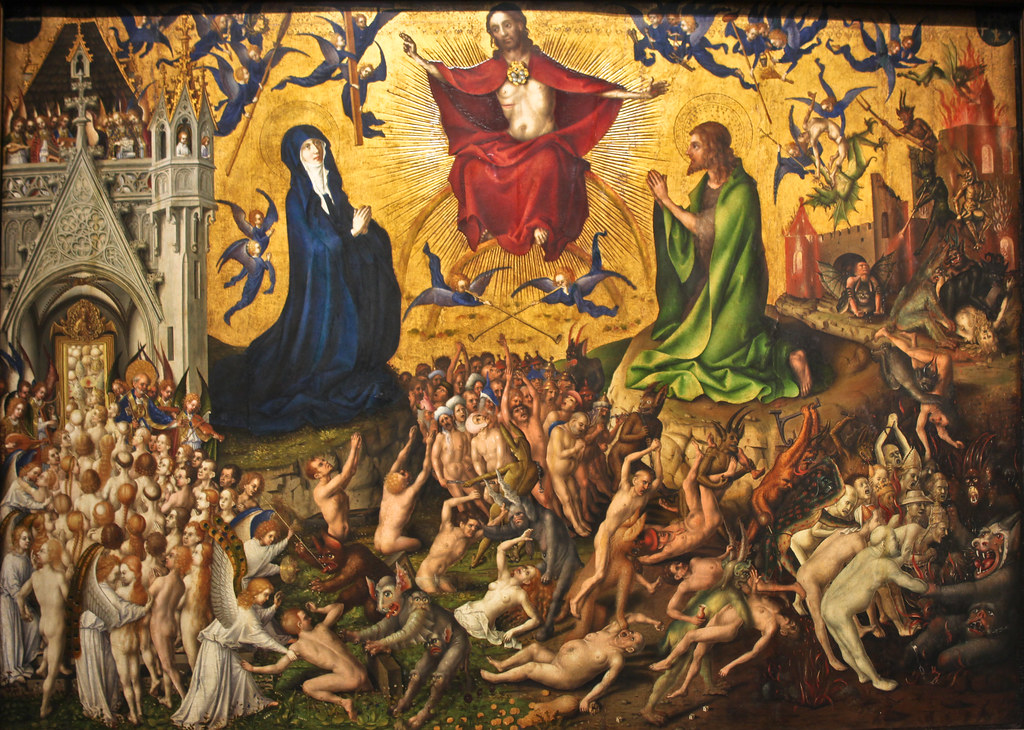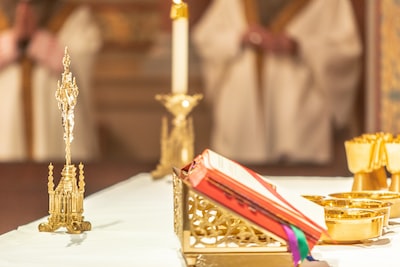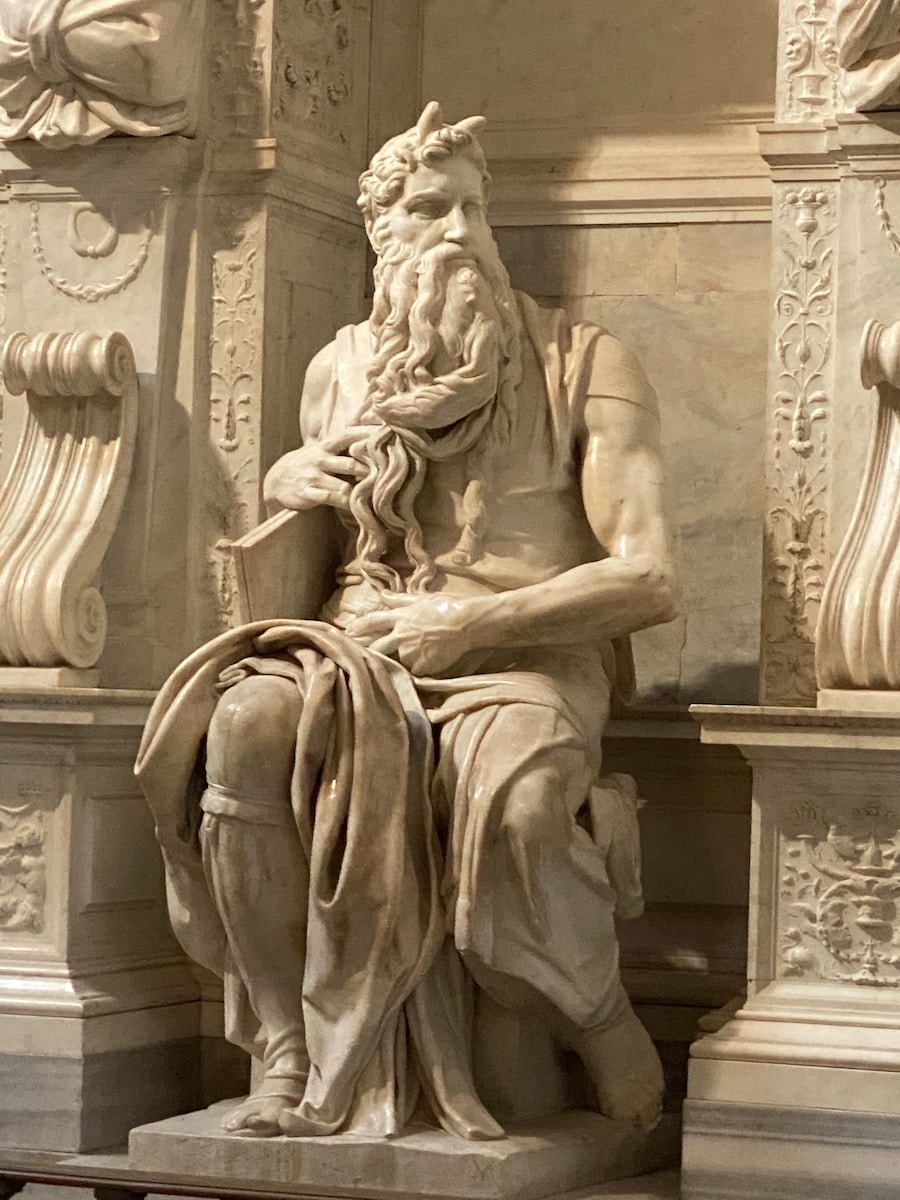Unveiling the Symbolism: Exploring the Foreshadowing and Fulfillment of Messianic Prophecies in Exodus 40
Introduction: The Significance of Exodus 40
Exodus 40, the final chapter of the book of Exodus, holds immense significance in the Bible. It marks the completion of the construction of the tabernacle, which served as a tangible representation of God’s presence among His people. The tabernacle was a portable sanctuary where the Israelites worshiped and offered sacrifices to God, and its completion in Exodus 40 signifies the fulfillment of God’s commandments and His faithfulness to His people.
The construction of the tabernacle was a meticulous process, carried out by Moses according to the specific instructions given by God. The attention to detail and careful adherence to God’s commands highlight the importance of obedience and reverence in worshiping God. Through the construction of the tabernacle, the Israelites demonstrated their commitment to honor and serve God, and their obedience serves as an example for believers today.
The completion of the tabernacle in Exodus 40 also foreshadows the ultimate fulfillment of God’s promises through Jesus Christ. Just as the tabernacle was a physical representation of God’s presence among His people, Jesus came to dwell among us as the “Word made flesh” (John 1:14). The tabernacle pointed to the coming of Jesus, who would be the ultimate dwelling place of God among humanity. Therefore, Exodus 40 serves as a crucial chapter in understanding the foreshadowing and fulfillment of Messianic prophecies in the Bible.
Overview of Exodus 40
Exodus 40 provides a detailed account of the final steps taken by Moses to complete the construction of the tabernacle. After receiving the instructions from God, Moses carefully followed each command, ensuring that every detail was carried out according to God’s plan. The chapter begins with the anointing of the tabernacle, including its furnishings, with the sacred anointing oil. This act symbolized the consecration of these items for holy use, setting them apart for God’s service.
Next, Moses anointed Aaron and his sons, who had been chosen to serve as priests, with water and dressed them in the holy garments. This act marked their consecration as priests and their readiness to perform their duties in the tabernacle. Through the anointing of Aaron and his sons, God established the priesthood, which would play a vital role in the relationship between God and His people.
Following the consecration of the priests, Moses proceeded to set up the tabernacle according to God’s instructions. He erected the framework, laid the sockets, set up the boards, inserted the bars, and erected the pillars. Once the physical structure of the tabernacle was in place, Moses spread the tent over it and placed the covering on top. Every step of the construction process was carried out with precision, reflecting the importance of obedience and attention to detail in honoring God.
Moses then placed the tablets of the Ten Commandments into the ark of the testimony, attached the poles to the ark, and put the mercy seat on top. The ark of the testimony, containing the tablets of the law, symbolized the covenant relationship between God and His people. The placement of the mercy seat on top of the ark signified God’s gracious presence and willingness to forgive sins through the sacrificial system established in the tabernacle.
With the completion of these final steps, the construction of the tabernacle was finished. The cloud of God’s glory covered the tabernacle, signifying His presence among His people. This momentous event marked a new chapter in the relationship between God and Israel, as they now had a physical place where they could worship and seek Him.
Analysis of Prophetic Elements and Symbolism in Exodus 40
Exodus 40 is replete with prophetic elements and symbolism that point to Jesus as the Messiah. The tabernacle itself, often referred to as the “dwelling place” or the “tent of meeting,” symbolizes God’s desire to dwell among His people. Just as the tabernacle was the place where God’s presence resided in the Old Testament, Jesus came as the ultimate embodiment of God’s presence among humanity. He is Immanuel, “God with us” (Matthew 1:23), and through His life, death, and resurrection, He established a new way for all people to have a personal relationship with God.
The placement of the ark of the testimony in the Holy of Holies, the innermost part of the tabernacle, carries significant symbolism. The ark contained the tablets of the law, representing the covenant between God and His people. This foreshadowed Jesus as the mediator of a new covenant, as He established a new and better way for people to be in right relationship with God. The writer of Hebrews describes Jesus as the mediator of the new covenant, stating that “he is the mediator of a new covenant, so that those who are called may receive the promised eternal inheritance” (Hebrews 9:15).
The anointing of the tabernacle and its furnishings served to consecrate them for holy use. This act of anointing symbolizes the setting apart of these items for God’s service and points to Jesus’ anointing as the Messiah and High Priest. In the New Testament, Jesus is referred to as the “Anointed One” (Acts 4:27) and the “High Priest forever” (Hebrews 6:20). His anointing signifies His unique role as the one who brings salvation and intercedes on behalf of humanity.
Furthermore, the consecration and anointing of Aaron and his sons as priests prefigure Jesus’ role as the ultimate High Priest who intercedes on behalf of humanity. The book of Hebrews emphasizes the superiority of Jesus’ priesthood, stating that He is “a high priest forever, after the order of Melchizedek” (Hebrews 5:6). Just as Aaron and his sons were consecrated and anointed to serve as mediators between God and the people, Jesus fulfills this role perfectly, bridging the gap between God and humanity and offering eternal redemption through His sacrifice.
These prophetic elements and symbolism in Exodus 40 provide a glimpse into the role and significance of Jesus as the Messiah. Through the construction and consecration of the tabernacle, God was preparing His people to recognize and receive the ultimate fulfillment of His promises in Jesus Christ.
Connection to Jesus and Messianic Prophecies
The concept of Messianic prophecies in the Old Testament reveals that Jesus fulfills these prophecies. Throughout the Old Testament, there are numerous prophecies that anticipate the coming of the Messiah, the anointed one who would bring salvation and establish God’s kingdom. These prophecies include details about the Messiah’s birth, ministry, death, and resurrection.
The birth of Jesus in Bethlehem, as foretold by the prophet Micah, is one such Messianic prophecy fulfilled in Jesus. Micah 5:2 states, “But you, O Bethlehem Ephrathah, who are too little to be among the clans of Judah, from you shall come forth for me one who is to be ruler in Israel, whose coming forth is from of old, from ancient days.”
Jesus’ miracles, such as healing the sick, raising the dead, and casting out demons, fulfilled the Messianic prophecies found in Isaiah 35:5-6 and Isaiah 61:1-2. These prophecies describe the Messiah’s ministry of bringing healing and restoration to the brokenness of the world.
The death of Jesus for the sins of others, as described in Isaiah 53, is perhaps the most significant Messianic prophecy fulfilled in Jesus. Isaiah 53:5-6 states, “But he was pierced for our transgressions; he was crushed for our iniquities; upon him was the chastisement that brought us peace, and with his wounds we are healed. All we like sheep have gone astray; we have turned every one to his own way; and the Lord has laid on him the iniquity of us all.”
Lastly, the resurrection of Jesus, foretold in Psalm 16:10, is a key Messianic prophecy that Jesus fulfilled. Acts 2:31-32 affirms this fulfillment, stating, “He foresaw and spoke about the resurrection of the Christ, that he was not abandoned to Hades, nor did his flesh see corruption. This Jesus God raised up, and of that we all are witnesses.”
While these Messianic prophecies may not have been initially recognized as such by the Jewish people before the time of Jesus, Christians believe that Jesus’ life, death, and resurrection fulfill Scripture. Jesus Himself referred to these prophecies to demonstrate His fulfillment of Messianic expectations. In Luke 24:44, Jesus said to His disciples, “These are my words that I spoke to you while I was still with you, that everything written about me in the Law of Moses and the Prophets and the Psalms must be fulfilled.”
By understanding the connections between Exodus 40, Jesus, and Messianic prophecies, we can appreciate the depth and coherence of God’s plan of redemption throughout the Bible. The fulfillment of these prophecies in Jesus confirms His identity as the promised Messiah and invites us to place our faith in Him as the Savior and Lord of our lives.
Significance of Old Testament Symbolism in Relation to the New Testament
Understanding the symbolism in the Old Testament is crucial for grasping the significance of Jesus’ role and the fulfillment of God’s promises in the New Testament. The Old Testament is filled with symbols and foreshadowing that find their ultimate fulfillment in Jesus.
For example, the tabernacle itself serves as a powerful symbol of God’s presence among His people. In the Old Testament, the tabernacle was the physical place where God chose to dwell among the Israelites. However, in the New Testament, Jesus is revealed as the ultimate embodiment of God’s presence. In John 1:14, it is written, “And the Word became flesh and dwelt among us, and we have seen his glory, glory as of the only Son from the Father, full of grace and truth.” Jesus, as the “dwelling place” of God among humanity, offers a greater and more intimate experience of God’s presence than the tabernacle ever could.
Other instances of Old Testament symbolism, such as Noah’s ark and Jacob’s ladder, also find their fulfillment in Jesus. Noah’s ark, which provided salvation and deliverance from the floodwaters, symbolizes Jesus as the one who saves and delivers humanity from the consequences of sin. Just as Noah and his family found safety and salvation within the ark, those who put their faith in Jesus find forgiveness and eternal life.
Similarly, Jacob’s ladder, which connected heaven and earth in a vision seen by Jacob, prefigures Jesus as the bridge between God and humanity. In John 1:51, Jesus references this symbol when He says, “Truly, truly, I say to you, you will see heaven opened, and the angels of God ascending and descending on the Son of Man.” Jesus is the means by which humanity can have access to God and experience the reconciliation and communion that was broken by sin.
Understanding these symbols and their fulfillment in Jesus deepens our appreciation for God’s plan of redemption. It reveals the coherence and continuity of God’s purposes throughout history and strengthens our faith in Jesus as the promised Messiah.
Understanding the Foreshadowing and Fulfillment of Prophecies
Exodus 40 provides an example of foreshadowing, as the events described in the chapter anticipate future events and the ultimate fulfillment of God’s promises in Jesus. The construction and consecration of the tabernacle foreshadowed Jesus as the ultimate fulfillment of God’s plan of redemption. Just as the tabernacle was a physical representation of God’s presence among His people, Jesus came to dwell among us as the “Word made flesh” (John 1:14).
The Passover, instituted in Exodus 12, is another instance of foreshadowing and prophecy fulfillment in the Bible. The Passover lamb, whose blood protected the Israelites from the judgment of God, prefigured Jesus as the Lamb of God who takes away the sins of the world (John 1:29). Jesus’ sacrificial death on the cross fulfilled the symbolism of the Passover lamb, providing salvation and deliverance for all who put their faith in Him.
The prophecies in Isaiah also anticipate the coming of the Messiah and find their fulfillment in Jesus. Isaiah 53, often referred to as the “Suffering Servant” passage, vividly describes the suffering and sacrificial death of the Messiah. This prophecy is fulfilled in Jesus, who willingly laid down His life as a ransom for many (Mark 10:45) and bore the sins of humanity on the cross.
Recognizing and understanding these foreshadowings and prophecies strengthens our faith in Jesus as the promised Messiah and deepens our appreciation for the coherence and fulfillment of God’s redemptive plan. It reinforces the trustworthiness of Scripture and affirms the significance of Jesus’ life, death, and resurrection for our salvation.
Theological Significance and Application
The theological implications of Exodus 40 and its symbolism are vast. They reveal God’s faithfulness to His promises, His desire to dwell among His people, and His provision of a mediator through Jesus Christ. The completion of the tabernacle in Exodus 40 signifies God’s willingness to establish a relationship with His people and provide a means for them to approach Him.
Recognizing Jesus as the ultimate High Priest and mediator between God and humanity empowers believers to approach God with confidence and seek forgiveness and reconciliation through Him. Hebrews 4:15-16 assures us that “we do not have a high priest who is unable to sympathize with our weaknesses, but one who in every respect has been tempted as we are, yet without sin. Let us then with confidence draw near to the throne of grace, that we may receive mercy and find grace to help in time of need.”
Understanding the prophetic elements and symbolism in Exodus 40 enriches our faith journey by deepening our appreciation for God’s plan of redemption and the significance of Jesus’ role as the Messiah. It invites us to cultivate a deeper relationship with Jesus, who is the true dwelling place of God among humanity. Through faith in Jesus, we can experience the forgiveness of sins, the indwelling of the Holy Spirit, and the assurance of eternal life.
Furthermore, the theological significance of Exodus 40 extends to our application of these truths in our daily lives. As believers, we are called to honor and serve God with the same obedience and reverence demonstrated by Moses and the Israelites. Just as Moses followed God’s commands diligently, we are called to live lives of obedience to God’s Word and to honor Him in all that we do.
Additionally, understanding the prophetic elements and symbolism in Exodus 40 encourages us to share the good news of salvation with others. Just as God desired to dwell among His people in the tabernacle, He desires to have a personal relationship with every individual. Through our testimony and witness, we can point others to Jesus as the way, the truth, and the life (John 14:6) and invite them into a relationship with the living God.
In conclusion, the significance of Exodus 40 lies in its prophetic elements and symbolism that point to Jesus as the Messiah. By understanding the connections between Exodus 40, Jesus, and Messianic prophecies, we gain a deeper appreciation for the coherence and fulfillment of God’s plan of redemption. The symbolism in Exodus 40 reveals God’s desire to dwell among His people and His provision of a mediator through Jesus. May our study of Exodus 40 and its symbolism deepen our faith, strengthen our understanding of Jesus as the Messiah, and empower us to live out our faith in Him.
#Exodus40Symbolism #MessianicForeshadowing #BiblicalProphecies #MessianicFulfillment #ExodusNarrative #ReligiousInterpretation #DivineForeshadowing #RedemptiveSymbolism #MessiahInExodus #FaithAndBelief #BiblicalExegesis #TorahInsights #ChristianTheology #OldTestamentForeshadowing #NewTestamentFulfillment #ReligiousSymbolism #PropheticSignificance #BiblicalExploration #MessianicRevelation #FaithJourney #ReligiousUnderstanding



